EOS 5D and 24-105 f4L IS USM
v
EOS 20D and 17-85 f4-5.6 IS USM
PART 4 - How about using a REAL lens?
Some numpties have suggested, on the forums which can be found on the interweb (don't go there!), that the EOS 5D "is not sharp at the edges". They seem to be basing this on a crappy sample photo posted by Canon (who should know better!) Sadly these uneducated creatures have failed to appreciate the difference between certain zoom lenses which are a bit soft at the edges, and the Canon EOS 5D sensor, which is extraordinarily sharp. To put at rest any minds which may be losing sleep at night over the potential corner softness of the EOS 5D sensor, I publish the following:
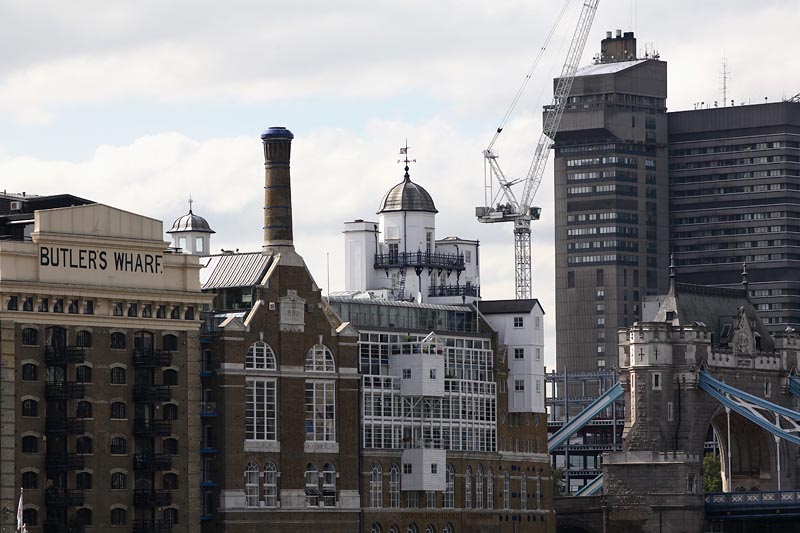
EOS 5D
200mm f2.8L
1/640th @ f8
ISO 200
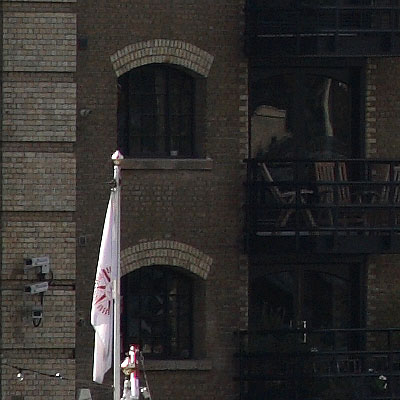
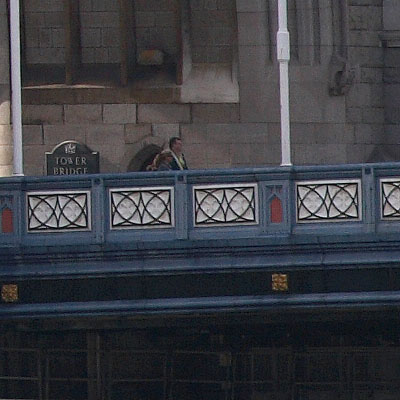 |
|
| 100% magnification, absolute bottom left hand corner | 100% magnification, absolute bottom right hand corner |
Notice that the words "Tower Bridge" are entirely legible in the 100% crop from the bottom right hand corner, whilst the plaque itself is barely discernible from the full shot. Similarly the pattern on the flag in the bottom left hand corner. This shot was taken with the 200mm f2.8L lens, which is about as sharp as it gets. What this sample shows is that any complaints people may have about 5D samples they've seen are likely to be lens related. The 5D sensor is unlikely to be the limiting factor for many photographs, although as seen below, with the very highest quality primes, it might be.
Please note the 100% extracts above, being in shadow, are reasonably dark. If images look excessively dark in the shadows it may be because your monitor is not calibrated. Using my uncalibrated monitor at work, shadow detail all disappears into blackness. My photographic monitor is calibrated using a Pantone Spyder, and these pages are optimised for a similarly calibrated monitor.
So, there's nothing wrong with the 5D's sensor. But how does the 20D compare with the same lens, under the same conditions?
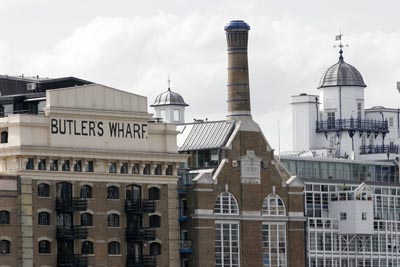
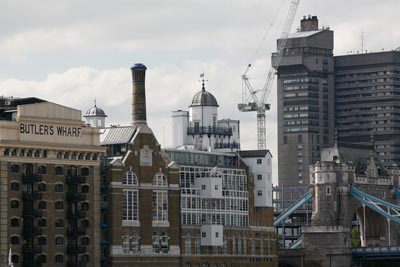 |
|
| Eos 20D | Eos 5D |
The shots above show the whole frame captured with the 20D and the 5D with the 200mm f2.8L lens, from the same vantage point. This clearly show the effect of the 20D's "crop factor". On the 20D, this lens has an equivalent focal length of 320mm. If what you want is a 320mm f2.8 prime lens, no real equivalent exists for the 5D. The nearest there is is the 300mm f2.8L IS. This weighs 2.5kg and costs £3250 compared with £525 and 765g for the easily hand-held 200mm f2.8L. But surely you could just crop the 5D frame to get the same effect as the 20D's "crop-factor"? Wrong.
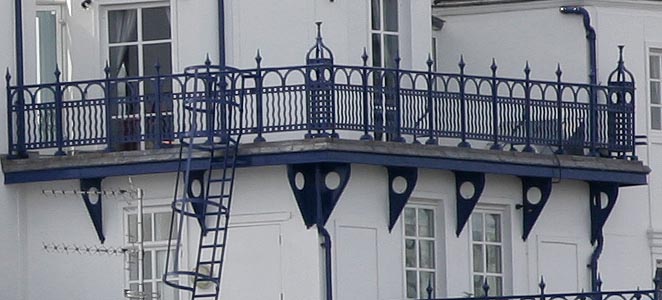
Eos 20D
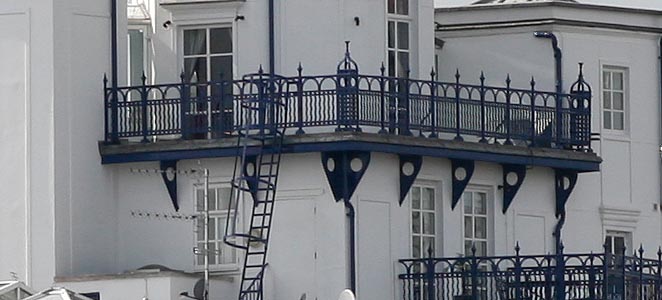
Eos 5D
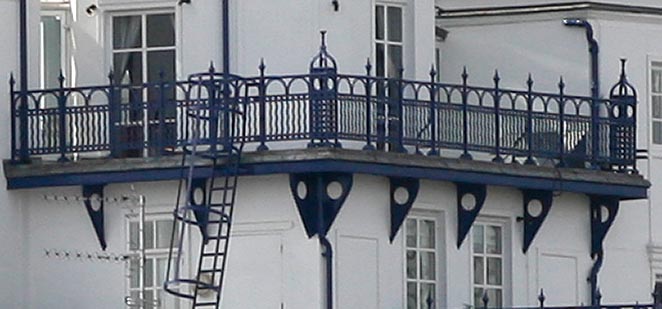
Eos 5d upsampled
The three samples above speak for themselves. The first is an "actual pixels" crop from the 20D. The second is a crop from the 5D frame to the same pixel width and height. The third is the crop from the 5D "upsampled" so it matches the field of view of the 20D crop. The 20D has very clearly captured more detail. This is not surprising as it has a "higher resolution" sensor, in the sense that its pixel density is higher than that of the 5D. Unless the lens was the limiting factor, you would expect the 20D to capture more detail in this test. This particular lens is clearly not the limiting factor.
This is an important advantage for the 20D for telephoto users. When I was on safari in South Africa, I found the 20D with 200mm f2.8L lens (320mm f2.8 equivalent) to be ideal. It was the right focal length for the job in hand, and if anything I often wanted a longer lens (and wished I'd bought a 1.4X teleconverter). I shoot normal to wide-angle more than I shoot telephoto, so for me the 5D is likely to be playing to its strengths more often than the 20D, but shooting style should definitely be taken into account in comparing the relative merits of these different camera systems.
Telephoto lenses specially designed for 1.6x "crop factor" cameras such as the 20D are in their infancy, and Canon so far do not make any. The 200mm f2.8L is designed for full-frame cameras. Only half the light it collects finds its way onto the 20D's sensor, the rest is wasted. Theoretically, it ought to be possible for Canon to make a specially designed crop-factor lens of the same size and weight but one stop faster, or significantly smaller and lighter for the same aperture. This makes the comparison between the 2.5kg 300mm f2.8L IS and the 765g 200mm f2.8L (320mm equivalent on 20D) even more stark. Perhaps a 200mm f2.8L crop factor lens (320mm equivalent) could, if Canon could be bothered making it, weigh in at under 500g? Many people are speculating, and Canon's own marketing would appear to suggest, that all Canon digital cameras will become "full frame" over the next few years. Given the telephoto advantage of crop-factor cameras, I am not convinced that this will be the case.
There are a number of digicams with tiny 8 megapixel sensors, such as the Sony F-828, which has a sensor measuring just 8.8mm x 6.6mm. That is a pixel density of 137,740 pixels per square mm. A 1.6x crop factor sensor with that pixel density would have 46.5 megapixels. That's not a fantasy, just existing technology made bigger. There is a comparison between the Sony F-828 and the Eos 10D with 70-200 f2.8L lens here. The Sony is by no means shamed, although the tiny pixels cause lots of noise even at moderate film speeds. An EOS 20D with 46.5 megapixel sensor would be amazing for telephoto work, and I think there's plenty of life left in the smaller format yet.